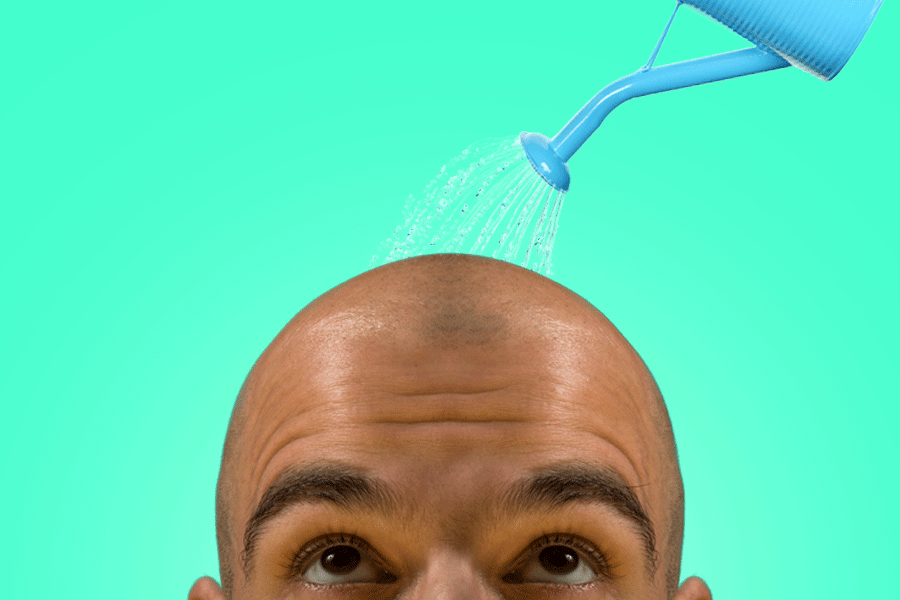“The worst thing a man can do is go bald,” Donald Trump once said.
He was at least partially right: Men are taught that going bald should be avoided at all costs, and as a result, they experience hair loss as “an enormous emotional burden” that may trigger serious psychological breakdowns.
At the more extreme end of the spectrum, in Mozambique, bald men are being killed because local witch doctors believe that their bare heads contain precious gold.
All in all, bald men have it rough.
On the flip side, men with full heads of hair are treated like gods: A 2016 survey performed by researchers at Johns Hopkins University found that men with bountiful hair are perceived as more attractive, successful and youthful. They also looked more “approachable.”
Obviously, the stigma surrounding baldness has been seriously profitable for the hair-growth industry, which earned an estimated revenue of $3.6 billion in 2016. Most of this capital goes to leading companies like Rogaine and Propecia, which sell products that can slow hair loss. These products, however, generally can’t help bald men regrow their fallen locks.
Fortunately, science may finally be on the verge of creating a comprehensive cure for baldness: Early this month, Japanese researchers announced that they had found a way to mass-cultivate hair-follicle germs (cells that grow and sustain hair). They were able to develop 5,000 within only a few days, which is the largest scale to date, and they expect that this discovery could give rise to a commercial cure for baldness as soon as 2020. Their team will conduct safety trials on mice beginning next month, and if all goes as planned, human trials will begin next year. (New Japanese laws have expedited the process of clinical trials, meaning a 2020 product release date really isn’t out of the question.)
While this sounds promising, these aren’t the only researchers who may be closing in on a cure — in fact, some claim to have already come up with a fix. Amos Barshad recently reported on David Weinstein, a neuroscientist who developed a topical hair-growth compound called RT1640 (which he actually used to regrow his own hair), for the New Yorker:
“Weinstein founded a company to develop RT1640 for the consumer market. That company, RiverTown Therapeutics, is to date tiny and unknown. But Weinstein is confident that he’s discovered the cure for hair loss. Which would mean that he has found the solution to an ancient problem with an eternal stigma.”
Weinstein and his business partner are reportedly still searching for investors to fund more clinical trials — RT1640 has already been tested on more than 600 humans in FDA-sanctioned trials — which would give way to a large-scale release of the drug.
Here’s how it works, according to the RiverTown Therapeutics website:
“RT1640 is made up of three small molecule drugs that together synergize to act on three distinct pathways in hair biology. One drug promotes the growth and migration of new stem cells, one drug promotes the commitment of the follicular stem cells to become new hair and one protects the dermal papilla from the effects of DHT [a byproduct of testosterone that shortens the lifespan of each affected follicle].”
Once again, this seems legit, and once again, there are other companies producing similar products: A Swedish company called Follicum is currently developing a cream or lotion that, according to their clinical trials, promoted hair growth in more than 75 percent of patients.
Then, there’s the seemingly endless stream of people participating in this race to the cure (and the buckets of cash that will almost certainly come with it): Companies and researchers in Silicon Valley, New York and England all appear to be developing a fix for baldness, meaning this is less about when we will find a cure, and more about who will be the first to get their product to market.

